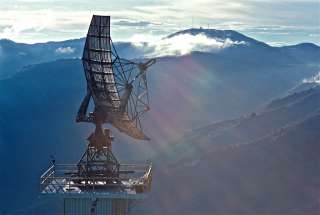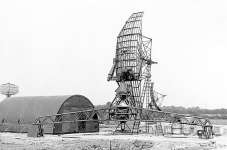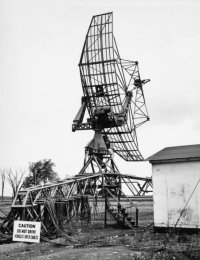AN/FPS-6
Description of the radar set, tactical-technical characteristics

Figure 1: AN/FPS-6, located above San Jose, CA on Mount Umunhum.
| Specifications | |
|---|---|
| frequency: | 2 700 - 2 900 MHz |
| pulse repetition time (PRT): | |
| pulse repetition frequency (PRF): | 300 - 405 Hz |
| pulsewidth (τ): | 2 µs |
| receive time: | |
| dead time: | |
| peak power: | 4.5 MW |
| average power: | 3.6 kW |
| instrumented range: | 300 NM (≙ 550 km) |
| range resolution: | 1000 ft |
| accuracy: | |
| beamwidth: | β: 3,2°, ε: 0,9° |
| hits per scan: | |
| antenna rotation: | |
| MTBCF: | |
| MTTR: | |
AN/FPS-6
The AN/FPS-6 was a high-power E-Band nodding height-finding radar. For many years the AN/FPS-6 radar has been the principal height-finder used by US armed forces and many allied nations. At least 450 of these systems have been delivered, including the mobile version, the AN/MPS-14.
The AN/FPS-6 was noted for extreme accuracy at long-range, and three available versions (FPS-6, FPS-6A, FPS-6B) gave it wide versatility under a variety of environmental conditions.
The bracket of the feed horn differs in some versions. Towards the end of the useful life (about 1980) there were also mixed versions, in which the electronics of the AN/MPN-14 were used in connection with an AN/FPS-6 antenna (see Figure 1).
Further modifications were named AN/FPS-89 and AN/FPS-90.


